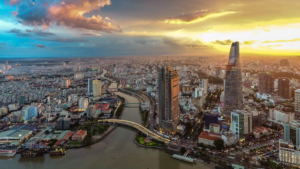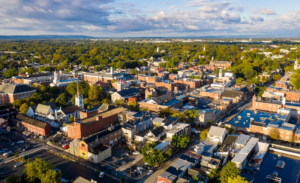Oct
14
Belonging in a World that Alienates
October 14, 2023 | | 1 Comment
“Do more than belong: participate. Do more than care: help. Do more than believe: practice. Do more than be fair: be kind. Do more than forgive: forget. Do more than dream: work.” – William Arthur Ward, motivational writer and poet.
The need to belong and the tendency to differentiate yourself from others is a normal part of human psychology; but I believe othering, from a societal to individual level, is much greater than what it should be. I think the way society determines who belongs impacts how we view others, because much of how we behave, what we like, and what we believe is based on societal norms of which we had no choice. From what we learn in school, how we govern, what media companies value, what is advertised, to the hierarchical economic structure, we are constantly influenced and told how to think.
We are trained by institutions to believe that there is an ideal “form” or type of human, and deviations of this are looked at negatively. This causes an “othering” that is harmful to communities with diversity, as groups become alienated and often dehumanized. No matter how kind or progressive you are, no one is immune to subconscious biases that are given to us, never to be corrected. It is often an uncomfortable topic to address because it is difficult to address one’s ignorance, but in times when communities are marginalized and hurt, pushing through uncomfortability is necessary. Some of my subconscious biases were unearthed when meeting my friends from Nepal. Never having learned about this country in depth, I had no way of knowing what they would be like and was surprised by the similarities in generational culture.
This sort of subconscious “outsider” bias is a pluralistic type of othering, because there was so much distant between me and this group of people from Nepal, my concept of them before we met was a reductive stereotype not based in reality. Without careful consideration, this sort of ignorance has the ability to alienate and dehumanize different cultures, abilities, sexualities, etc. On an international scale, it becomes an excuse for committing human rights violations by states. On an individual level, it can incite xenophobia and violence. The single “othering” we do is for obvious reasons more personal and targeted—you may know this person and think of them as “backwards” or not worth your understanding. I sometimes feel this way toward those that differ from me politically, as I often feel a strong reaction to this type of individual “othering”. I’ve found that it takes active self-awareness of one’s biases and stereotypes, getting out of your comfort zone, and stepping into spaces with a learning attitude not only of the experience of the “othered”, but your relation and role of “othering” that person. This allows you to see their perspective better, and even sympathize with them.
While the condition of the “other” is not ideal (at best), there is power in being an outsider. You experience the limitations of how society is organized and can advocate for normalization and accommodations. You’re able to see first-hand what must improve for a better society. If states were to prioritizes inclusion, we would be taught about groups that are different to us to dismantle stereotypes and create a stronger global community. And If the United States sought to help those we “other” in international politics instead of western countries that get the most spotlight, along with those we “other” within our own state, the world would be a more egalitarian, beneficial, and enjoyable place to live for all.

AMLE.org
Sep
9
Hometowns in the UAE, US, and Vietnam
September 9, 2023 | | 3 Comments
I share Andrew Masondo’s (member of the African National Congress) sentiment of wanting to “Understand the differences; [and] act on the commonalities.” of different cultures. However, despite my attempts to combat my sheltered American ignorance, my lack of cultural knowledge is always humbling. My understanding of the Middle East is limited. So when I (and around 40 other students) were given the opportunity to engage in cultural exchange, it was much anticipated. Student from the States, United Arab Emirates, and those who’ve emigrated for university, gathered to try to better understand our similarities and differences. I spoke to two students from the UAE, and one from Vietnam. What surprised me most was the number of commonalities we had despite the differences in culture and location, which demonstrates the value in being able to meet peers from vastly different places to your own – it puts your life in a much more self-aware perspective relative to the world, which is essential as we become increasingly interconnected.

Ho Chi Mihn, Vietnam. https://www.lonelyplanet.com/articles/best-things-to-do-in-ho-chi-minh-city
I come from a small, old, American college town called Carlisle, Pennsylvania. While there were some general similarities, our hometowns differed by quite a bit. The student from Ho Chi Mihn, Vietnam, discussed her upbringings in Vietnam’s most populated city located near an international airport. While I also live near an airport, it is nowhere near the same size or number of destinations. The two students from the UAE also came from the most contrasting places in terms of size: Abu Dhabi, the capital of the UAE, and Umm Al Quwain, the second-smallest city in the UAE. Both students loved their hometowns for its size and proximity to beautiful beaches, which they described as being where “the desert meets the sea”. In comparison to cities in the States, Carlisle is among the smaller towns and is probably analogous to Umm Al Quwain. However the UAE boarders the Persian Gulf, whereas I am a few hours from any body of water. In terms of racial diversity, The other obvious difference would be the ethnic makeup. The most diverse city within the group would be Ho Chi Mihn and Abu Dhabi, as they are big international metropolitan areas, much like large cities in the States. Carlisle on the other hand, like most US states, is majority domestic, with about 80% White citizens and about a 20% minority of Black and Hispanic people, among others. Surprisingly, it is more racially diverse than surrounding towns. My takeaway is that just in the relatively small UAE alone, there is such diversity in town size and ethnicity, and that metropolitan cities attract internationals anywhere. 
Carlisle, PA, the US. https://www.travellens.co/best-things-to-do-in-carlisle-pa/
Climate is also quite different in each region. The UAE’s summers are nothing I have ever experienced. With high humidity and temperatures around 70 degrees Fahrenheit in winter and exceeding 100 degrees Fahrenheit in summer, one student mentioned that what activities that are usually done in Summer in the States they do in the winter. This is in great contrast to the student from Ho Chi Mihn, where it’s also usually humid and rarely gets snow, but is much more temperate ranging in the 80s or 90s in summer. Ho Chi Mihn’s climate is much like Carlisle’s.

Umm Al Quwain, the UAE https://www.britannica.com/place/Umm-al-Qaywayn-emirate
Overall, in the little time we had, we couldn’t really get into depth about our life experiences. However, even in such brevity, I gained a sense of connectedness of the students in the UAE. America does a poor job educating about different cultures. The result of this is often a stereotyped version of people even in our own neighborhoods, let alone understanding the diversity in other countries. One must actively search for opportunities to learn about other nations, because how often does one see culturally accurate representations? This is where we must take advantage of our interconnectedness. While standard for developed nations, the technology to be able to speak to anyone from anywhere in the world is incredibly taken for granted and underutilized. I think we should use such technological advancements to expose ourselves to life in different nations and cultures, because maybe then the fear of those different to us will be challenged, and our commonalities bring us together.